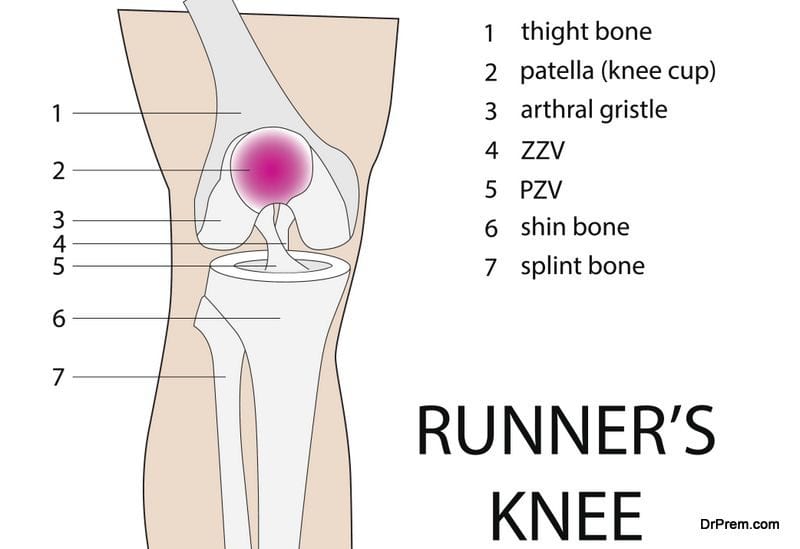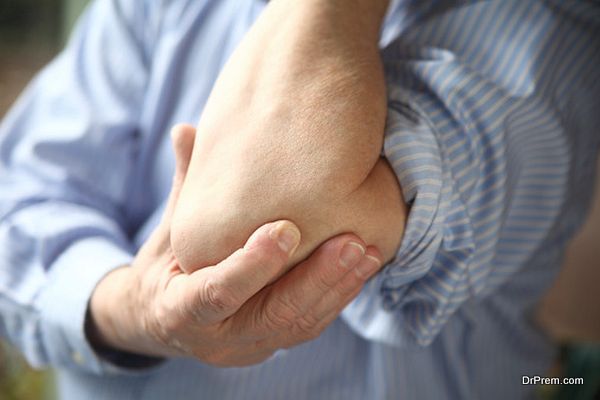Sports are an awesome form of entertainment but are also designed around physical strength and ability. Athletes must be in tip-top shape to perform, win, and do so without injury. Training for sports involves a variety of exercises from strength training to cardio and drills to practice and prepare for games and events. Sadly, high school students alone account for more than 2 million sports related injuries every year. Sports injuries are caused for a variety of reasons from purely accidental to improper form while training or unsportsmanlike conduct. The best way to prepare and prevent sports related injuries is to train properly, wear the correct equipment, and always be aware of your surroundings. Mauricio Chiropractic explains how chiropractors can help prevent and treat sports related injuries. Physical therapists, trainers, and chiropractors are trained in treating and preventing sports related injuries. Read on to discover some of the most common sports injuries athletes incur and how to avoid them.
ACL Tear
 ACL injuries are common in sports where athletes stop short or change directions abruptly, like football and basketball. The ACL, or anterior cruciate ligament, connects your leg bone to your knee. Abrupt and sudden movements can cause this ligament to tear, pull, or strain. Think of your ligament as a rubber band. If it’s extended too far, it will snap. ACL tears are one of the most serious and debilitating injuries an athlete can endure. If the ACL is torn completely, surgery may be required and it could mean a career-ending injury. Small tears may not require surgery but will still delay an athletes return to the sport. Strength training can help prevent ACL tears. Focus on your hips and thighs, which help provide extra support and strength for your knees. Common exercises to achieve this are lunges and squats. Once you progress, you can add weights to these exercises. Always practice proper form. Physical therapy and visiting a chiropractor
ACL injuries are common in sports where athletes stop short or change directions abruptly, like football and basketball. The ACL, or anterior cruciate ligament, connects your leg bone to your knee. Abrupt and sudden movements can cause this ligament to tear, pull, or strain. Think of your ligament as a rubber band. If it’s extended too far, it will snap. ACL tears are one of the most serious and debilitating injuries an athlete can endure. If the ACL is torn completely, surgery may be required and it could mean a career-ending injury. Small tears may not require surgery but will still delay an athletes return to the sport. Strength training can help prevent ACL tears. Focus on your hips and thighs, which help provide extra support and strength for your knees. Common exercises to achieve this are lunges and squats. Once you progress, you can add weights to these exercises. Always practice proper form. Physical therapy and visiting a chiropractor
Concussion
Concussions are extremely common in all types of sports, from wrestling and football to basketball and soccer. Athletes playing contact sports are at higher risk. A concussion occurs after a severe hit to the head and involves a person’s brain moving inside their skill. This sounds serious and truth be told, concussions can be life-threatening depending on the severity. Some athletes will become unconscious following a concussion, while others will experience side effects including nausea, dizziness, disorientation, loss of balance, and headache. Following a concussion, all patients should be seen and evaluated by a medical professional. Generally, limited screen time, ample rest, and avoiding any intense physical activity is recommended following a concussion. Multiple concussions can even result in permanent brain damage. Wearing the proper equipment to protect your head and avoiding head-to-head contact or collisions will help reduce your risk of receiving a concussion.
Tennis or Golf Elbow
 Don’t let the name of this injury deceive you. Athletes outside of tennis players and golf professionals are at risk for tennis or golf elbow. This condition is also known as epicondylitis and is caused by the continued use of the elbow. This is where it’s name originated, since tennis players and golfers use the same, repetitive motion during games and matches. Signs you’re experiencing this type of injury are pain, discomfort, and swelling on the inside or outside of the elbow. It’s interesting to note that tennis or golf elbow sufferers are generally over the age of 30.
Don’t let the name of this injury deceive you. Athletes outside of tennis players and golf professionals are at risk for tennis or golf elbow. This condition is also known as epicondylitis and is caused by the continued use of the elbow. This is where it’s name originated, since tennis players and golfers use the same, repetitive motion during games and matches. Signs you’re experiencing this type of injury are pain, discomfort, and swelling on the inside or outside of the elbow. It’s interesting to note that tennis or golf elbow sufferers are generally over the age of 30.
Rest, ice, and anti-inflammatory or pain medications are the only way to help heal this condition. Taking a short hiatus from the sport that caused the injury is also recommended. You can prevent tennis or golf elbow by strengthening your forearms using light weights or pull-ups.
Shin Splints
Shin splints are a common injury among runners due to the amount of stress and pressure placed on the legs. But shin splints can affect other athletes as well and those who start a new exercise too quickly. Shin splints cause a shooting pain down the front of your leg, in the area of your shin bone due to overuse. In rare cases, the pain may be associated with a fracture in the bone. If you feel pain or discomfort in this area, you should take a break from your current activity level or switch up your current exercise routine. You can also try ice and over-the-counter pain relief medication. If the pain doesn’t subside, you should see a medical professional to determine the severity of your condition. Stretching before and after your workouts, wearing shoes with proper support, and understanding your body’s limitations can all reduce your risk of shin splints.
Hamstring Strain
 A hamstring strain is similar to an ACL tear in terms of location and cause. The hamstring is made up of three muscles that rest behind your knee. When an athlete overuses these muscles, it can cause a strain, or pull. Similar to an ACL tear, the pain and discomfort experienced during a hamstring strain is caused by tiny tears in these muscles or tendons. Any activity that causes an athlete to overstretch this area of the body, can result in a strain. Other causes include lack of flexibility and neglecting to warm-up before intense exercise. This leaves the muscles tight and susceptible to strains. Athletes participating in high-intensity training or exercises that fatigue their muscles are at greater risk for hamstring strains. That’s because your body’s natural way of protecting your muscles actually stops working once your muscles are too tired. While not overly serious, one downside to hamstring strains is the amount of time they take to heal — upwards of a year! That’s because the simple act of walking, places additional stress on your hamstring. Try stretching the muscle regularly, taking things slow, and using ice and anti-inflammatory medications when needed.
A hamstring strain is similar to an ACL tear in terms of location and cause. The hamstring is made up of three muscles that rest behind your knee. When an athlete overuses these muscles, it can cause a strain, or pull. Similar to an ACL tear, the pain and discomfort experienced during a hamstring strain is caused by tiny tears in these muscles or tendons. Any activity that causes an athlete to overstretch this area of the body, can result in a strain. Other causes include lack of flexibility and neglecting to warm-up before intense exercise. This leaves the muscles tight and susceptible to strains. Athletes participating in high-intensity training or exercises that fatigue their muscles are at greater risk for hamstring strains. That’s because your body’s natural way of protecting your muscles actually stops working once your muscles are too tired. While not overly serious, one downside to hamstring strains is the amount of time they take to heal — upwards of a year! That’s because the simple act of walking, places additional stress on your hamstring. Try stretching the muscle regularly, taking things slow, and using ice and anti-inflammatory medications when needed.
Injuries are simply a part of any sport. While you can practice proper form, wear the right equipment, and be mindful of your opponents, accidents will inevitably happen. When injuries do occur, properly treating them and taking adequate time to rest is paramount. Don’t rush the process or you may worsen the condition or prolong recovery time.
Article Submitted By Community Writer




